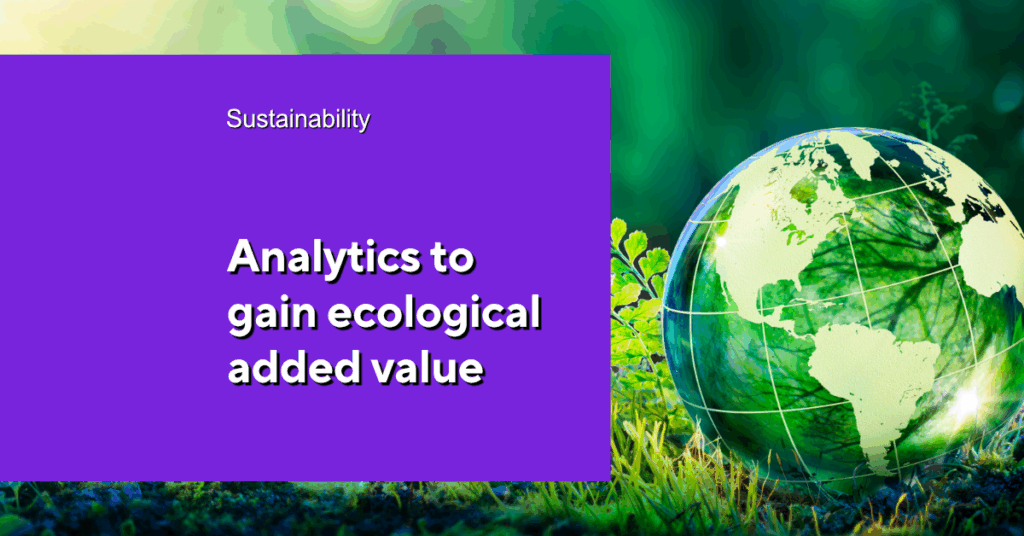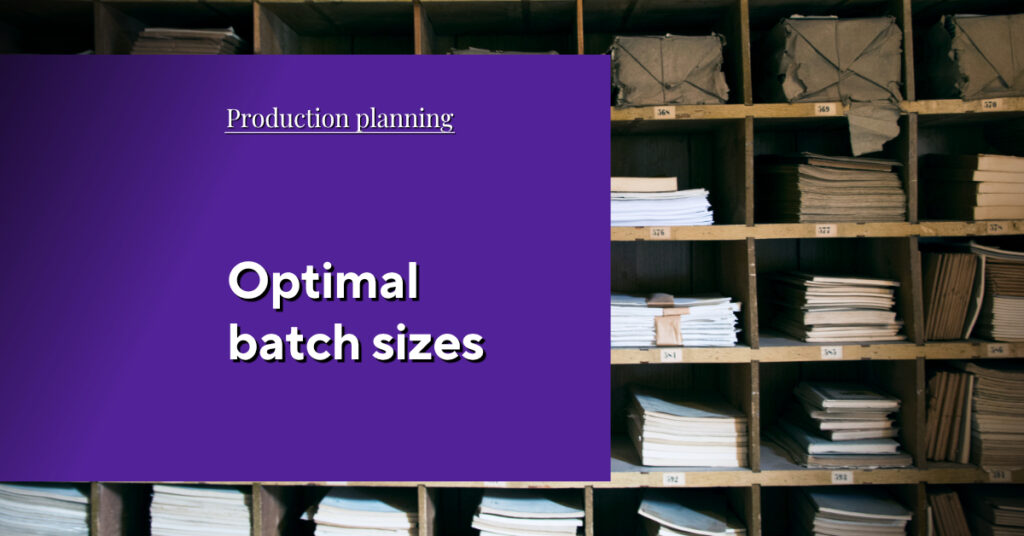The 5 biggest planning challenges of 2023
In 2020 and 2021 the economy was characterized by the challenges brought on by the Corona pandemic. At the onset of 2022 many companies were optimistic about the future. The mood was even slightly euphoric as the pandemic had accelarated digitization in many areas and had also established new work models. Significant economic growth was predicted.
But things turned out differently in 2022. The current developments – above all the war in Ukraine – are once again posing enormous challenges for businesses. The economy is faced with the implications of the war such as the high energy prices, the shortage of raw materials and supply chain disruptions. As a result, increasing inflation and a decline in demand will continue for longer than hoped for in the coming year. The lack of skilled workers as well as climate change are further aspects which will prove taxing for many industries and lead to high uncertainty in 2023.
Challenge #1:
Supply chains will still be under pressure
The supply chain problems which occurred during the pandemic still continue to beset many companies. Even if container ships are no longer queuing up in front of international ports and manufacturing centers are currently emerging from China’s strict lockdowns as part of their No-Covid strategy, it will still take a while for supply chains to return to normal. This is not dissimilar to a highway congestion which builds up and is still there long after the cause of the jam has been dealt with.
The Ukraine war has put additional strain on supply chains worldwide since its outbreak in February 2022. As a consequence, many assembly lines will still remain at a standstill and we will still see empty shelves here and there, even in 2023.
Challenge #2:
Raw materials will be in short supply
Closely associated with the supply chain problems is the procurement of raw materials and intermediate goods. At the moment, nearly every industry is affected by the shortage of raw materials worldwide. In particular, steel, plastics, wood, aluminium and copper are in short supply.
One reason for this is the Corona pandemic. When it broke out, the demand for products declined. Consequently, output and production capacity was cut back. The suppliers of raw materials, who had adapted to the change in demand behavior, cannot meet the sudden increase in demand after the worldwide economy started up once again.
Furthermore, the shortage of raw materials coupled with high demand inevitably leads to higher purchase prices and consequently manufacturing costs increase. Finally, these increases are passed down to consumers who have to contend with drastic price hikes for many goods and services. The demand for “luxury” goods declines as a result.
Companies are therefore affected by the current volatility on the raw materials market on many levels, and this will persist in 2023.
Challenge #3:
The energy crisis will be a long-term problem
Russia’s invasion of Ukraine has triggered an energy crisis in Europe. Germany, in particular, can expect an energy shortage lasting several years. This is because natural gas is its primary source of energy – for private households as well as in energy-intensive companies in manufacturing industries feel the impact of the price increases to a great extent.
Concerns are growing in view of increasing energy prices. As a result, a decline in production or even production standstills are very real threats. Companies are also compelled to pass the cost increases down to the end consumer – by increasing their own prices for their products.
The future regulation of the energy market is a major factor of uncertainty for the development of industry in Germany. At present, the cap on gas and electricity prices has lessened the negative consequences of high energy costs to some extent, but it is debatable as to whether high subsidies can be upheld on a medium to long-term basis. What will happen after 2023?
Challenge #4:
Sustainability – a must for all of us
On the one hand businesses must address the issues of energy security and the associated dependency on gas supplies. On the other hand, accelerating the net-zero agenda is an important issue for the economy.
Not only politicians but also a large share of society are calling on businesses to become more sustainable. To this end, ecological and social standards are being set. Those who do not comply with these standards risk suffering economic losses as well as a loss of reputation among consumers.
Improving energy efficiency and accelerating the transformation towards sustainable energy sources will be crucial to achieve the above-mentioned security and still act in the interests of the environment and society. Many companies have taken on this challenge in the past few years but in view of how quickly climate change is occurring, this is becoming more and more urgent.
Challenge #5:
The growing lack of skilled workers
It is indeed paradoxical that companies which plan to relocate some areas of their supply chain back in Germany are faced with yet another challenge: the lack of skilled workers. In the past it was mostly IT experts and engineers who were urgently needed, today a great many other sectors are in need of workers: truck drivers, waiters and waitresses, skilled craftsmen and women, etc.
2023 is the year in which the generation of baby boomers in Germany – i.e. those born in the years with a high birth rate – go into retirement. In the coming years these will leave a huge gap in companies which will need to be filled. The gap will not just be evident in quantity, but also in quality, as long as measures are not taken to ensure that the workers’ knowledge remains in the company. In this context another question is raised: how do we retain the expert knowledge of future retirees if it is not possible to do this in personnel form due to a lack of new recruits?

Are you interested in our factsheet?
What are the benefits of mathematical Optimization?
Flexibility and resilience using mathematical optimization
We live in an era in which our daily life is characterized by global events. Companies must accept that they are expected to respond quickly to the latest developments, customer requirements and market changes. The years of certainty in which long-term planning was possible are over. Companies which can adapt to this and keep pace with the speed of change will be successful in the future.
Resilience, independence, flexibility and reliability: these are the buzzwords which, against the background of competitiveness, will be important in the near future – also taking into account the pricing policies of Far Eastern markets. Companies need to ask themselves which potential and opportunities are available. Data analysis with the aid of mathematical optimization can be of immense support in decision-making in relation to the necessary changes and adaptions.
Resilient supply chains and full warehouses
The above-mentioned challenges for 2023 cannot be considered independently of one another. Many of the problems are interwoven and the solution approaches should not be considered individually but as a whole. With the aid of some examples we would like to demonstrate how mathematical optimization can support you in making the right business decisions.
Managing resilience
Resilience – as one of our buzzwords – is mostly used in the context of supply chains. In regard to the latest crises, we have come to realize that supply chains must be able to cushion the effects of disruptions and adapt accordingly.
Transparency, risk and opportunity analyses as well as scenario planning using mathematical optimization help companies to respond to sudden changes. Uncertainty in the supply chain can be manged and the risks reduced.
Adjusting inventory levels
Not only the fragility of supply chains but also the currently volatile raw material markets lead to distinctly longer delivery times and higher purchasing prices.
Higher inventory guarantees more reliable production and delivery in this situation and the use of cost benefits when purchasing raw materials. Demand forecasts based on historical sales data and current trends and developments can help in determining optimal inventory levels and in a foresighted purchasing policy.
Rethinking locations
Nearshoring and Reshoring?
The uncertainty caused by the current crises mean that companies are now beginning to look more closely at their supply chains in regard to locations and are contemplating nearshoring and reshoring.
It is also important to tap into domestic/European raw materials and expand the use of alternative energy resources – to strengthen independence. More recycling and optimized concepts for the circular economy can further reduce dependency.
Shorter routes when purchasing raw materials as well as increasing the use of alternative energy are also contributions to climate neutrality.
Or what about relocating abroad?
One consequence of relocating individual supply chain sectors back to Europe is that labor and production costs will be higher. In addition, the energy crisis and the respectively high inflation rate in Germany means that many companies will not be able to undertake planned investments which would have been necessary to remain competitive. To avoid having to withdraw from the market entirely, many companies choose to locate production sites abroad where energy and labor costs are lower.
Analyzing all potentials and conflicts in the form of network planning helps businesses make the right decisions in the long run and consider aspects such as costs, but also reliability, independence and sustainability at the same time.
Preventing knowledge loss
Businesses that do not want to be confronted with a shortage of qualified workers and impending knowledge loss should think about applying innovative technologies. Digitization, Artificial Intelligence and automation can help overcome these challenges to some extent. Here they have to succeed in applying such technology in a manner which ensures that it supports employees effectively in their work and does not make them superfluous.
Data knowledge in companies is- just like the expert knowledge of employees – an important resource. Analyzing data from internal systems like ERP or CRM as well as information from publicly accessible databases provides a detailed overall picture of the processes of a company.
By applying planning software such as OPTANO, your strategic planning becomes easier and more certain. In addition, resources and individual processes can be planned better. The time required to do the work is greatly reduced; at the touch of a button companies can obtain significant insights within a very short time and make suitable decisions.
More interesting articles
OPTANO can be deployed in many areas – also in 2023
As demonstrated in the solution approaches above, mathematical optimization can support your business, even in times of crisis. Decision-making in network planning, the creation of resilient supply chains as well as determinign optimal inventory levels and production plans are just some of the areas in which planning software such as OPTANO can be deployed.
Thanks to OPTANO companies can plan faster, better and more easily. With the help of Prescriptive Analytics and solvers, thousands of what-if scenarios can be analyzed. The result: recommendations on which action to take which optimally meet your – often conflicting- goals.
If you would like to find out how mathematical optimization can support your company in its planning, then why not read our factsheet “What are the benefits of mathematical optimization?” Alternately, feel free to contact one of our consultants.
The crisis as a chance?
The optimism at the start of 2022 seems to have vanished. Faced with the reality of the Ukraine war and its international implications, forecasts on economic growth were quickly retracted. Yet when we look back at the onset of the pandemic, the forecasts held little optimism and the challenges were great. And as we mentioned at the start of this article, the crisis has already led to progress, in digitization for example. Now we have to overcome new challenges alongside similar challenges to those of three years ago .
Have you got your copy of our factsheet on this topic?

In our factsheet “What are the benefits of mathematical optimization?” we ask 5 questions to help you assess whether mathematical optimization brings benefits to your organization.
To obtain our factsheet, all you need to do is enter your contact details in the space below. A pop-up window will then open to download the whitepaper. Please note that by providing us with your email address, you agree that we may contact you on this topic. You may revoke this agreement at any time by contacting privacy@optano.com.






